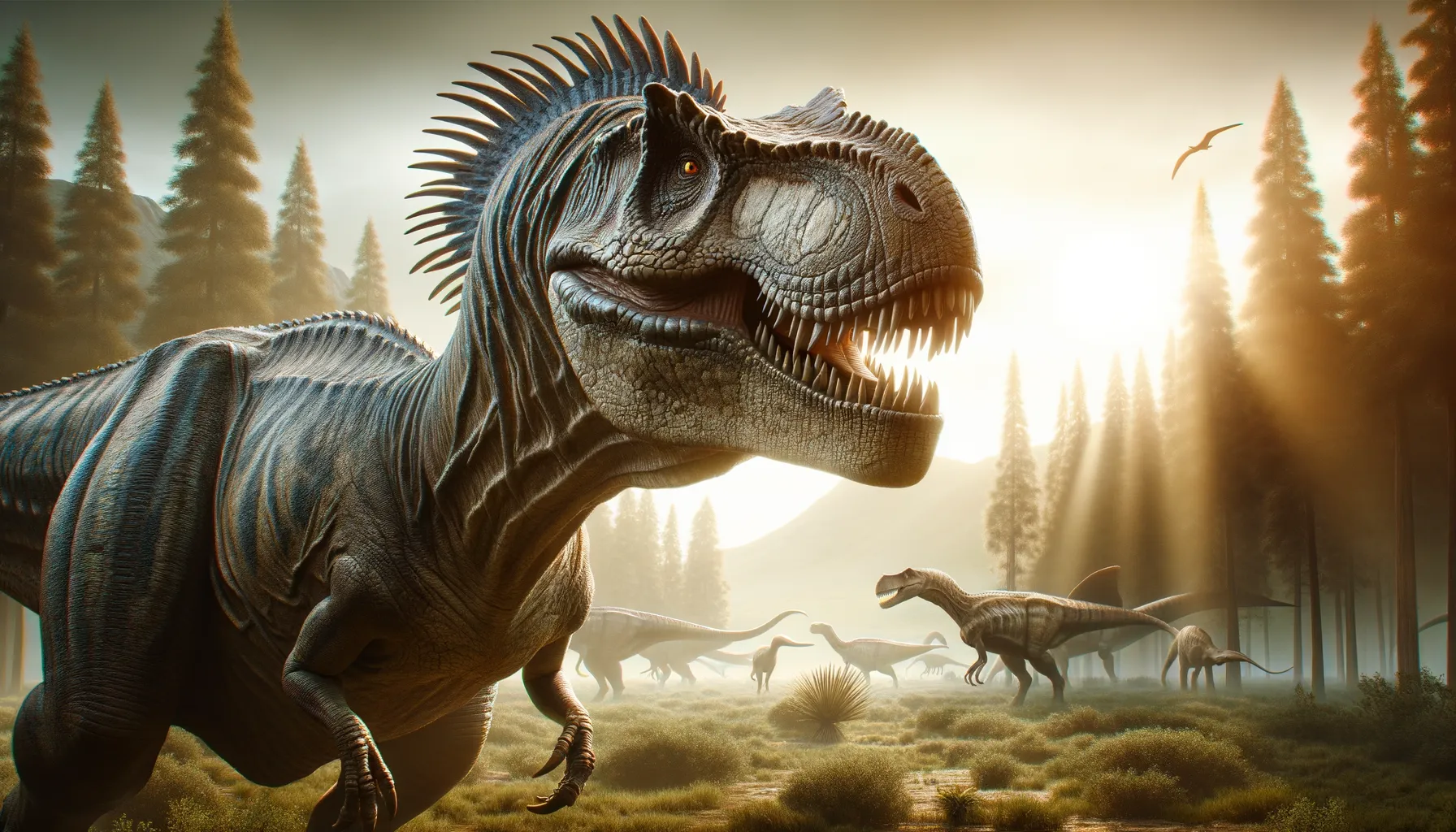
Saurophaganax
The ultimate Jurassic predator unleashed!
Period
Jurassic
Length
Could reach up to 40 feet in length.
Height
Around 10 feet tall at the hip.
Weight
Approximately 3 tons.
Saurophaganax was a formidable predator that roamed North America. Known for its considerable size and fearsome appearance, it was likely the top predator of its region during the late Jurassic period. With its powerful build and sharp teeth, it was well-equipped to hunt large herbivorous dinosaurs. Its fossil remains provide valuable insights into the ecosystems of ancient times and the diversity of predators that existed.
Diet
Saurophaganax was a carnivore, preying on large herbivorous dinosaurs such as sauropods and stegosaurs. Its large jaws and sharp teeth were well-adapted for slicing through tough flesh and sinew.
Hunting
This dinosaur likely hunted both alone and in small groups, using its size and strength to overpower prey. It may have also scavenged from carcasses left by other predators, ensuring a more varied diet.
Environmental challenges
Living during the late Jurassic, Saurophaganax faced a world full of changing climates and ecosystems. Competition with other predators like Allosaurus posed significant challenges. Its survival depended on adapting to these dynamic conditions, which included shifts in available prey and habitat disturbances due to volcanic activities and sea-level changes.
Speed
Moderately fast for a large predator.
Lifespan
Possibly up to 30 years in the wild.
First discovery
Discovered in Oklahoma in the 1930s.
Fun Facts
- Saurophaganax means 'lord of the lizard eaters,' highlighting its position as a top predator.
- It lived during the late Jurassic period, around 151 million years ago.
- Saurophaganax is believed to have been one of the largest meat-eating dinosaurs, possibly reaching up to 40 feet in length.
- Its fossils have primarily been found in the Morrison Formation in North America.
- Saurophaganax might have been similar to another large predator, Allosaurus, but bigger.
- It had powerful jaws and sharp teeth, making it an efficient hunter.
- Saurophaganax was likely at the top of the food chain, preying on large herbivorous dinosaurs.
Growth and Development
Saurophaganax likely grew rapidly during its early years, reaching its full size by adolescence. As a juvenile, it relied more on speed and agility, but as it matured, its size and strength became dominant traits. Like many large theropods, it likely exhibited a prolonged growth phase before reaching peak size.
Habitat
Saurophaganax inhabited semi-arid regions with abundant vegetation alternating with open plains. These areas supported large herds of herbivorous dinosaurs, providing ample hunting opportunities. Its environment also included rivers and forests, offering diverse ecological niches.
Interaction with other species
As a top predator, Saurophaganax interacted with various herbivorous dinosaurs, often as a significant threat. It competed with other carnivores like Allosaurus, possibly leading to territorial disputes. It may have had symbiotic relationships with smaller scavengers, benefiting from their cleaning efforts after a meal.
Natural lifespan
In the wild, its natural lifespan could extend up to 30 years.
Reproduction
Saurophaganax reproduced by laying eggs, potentially in well-hidden nests to protect from scavengers. Parental care might have been minimal, with hatchlings fending for themselves soon after birth. Seasonal mating rituals likely occurred, ensuring species continuity.
Social behaviour
While primarily solitary, Saurophaganax might have formed temporary groups during mating season or when hunting large prey. Territorial by nature, it defended its hunting grounds vigorously. Communication involved vocalizations and postures.
Fossil locations
Significant Saurophaganax fossils have been found in Oklahoma, notably in the Morrison Formation. This site has yielded various specimens, helping paleontologists piece together its anatomy and lifestyle. Other fragmentary remains discovered across North America suggest a wider historical range.
